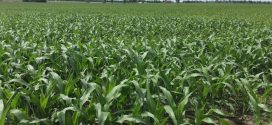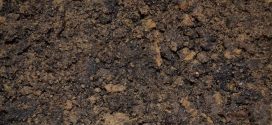To continue our email series about micronutrients, this week we turn to molybdenum. Our Yield Booster product supplies sodium molybdate as a molybdenum source. You may recall from past emails that Yield Booster combines a 12-9-6 fertilizer analysis with seven vital micronutrients: boron, cobalt, copper, iron, manganese, sodium molybdate and zinc. Molybdenum influences a plant’s nitrogen status. Specifically, molybdenum generates …
Read More »Monthly Archives: June 2016
Use Yield Booster to Help Stressed Corn
Burn Out Weeds
With the rain that we and our growers had earlier in the season, we’ve seen and heard about weeds posing a big challenge. In some cases, we’ve had farmers replanting due to strong weed pressure. This spring, we at BigYield.us have experimented with managing weeds using a Red Dragon row crop burner. Burners use a propane torch to create heat that …
Read More »Weed Burning at BigYield.us
Check Cobalt in Your Legumes
Like we’ve shared in several recent newsletters, we at BigYield.us view supplementing micronutrient levels as a potential strategy to maximize yields. Limited micronutrient supplies may prevent crops from taking full advantage of otherwise favorable environmental conditions and achieving their yield potential. Yield Booster from BigYield.us adds seven vital micronutrients – boron, cobalt, copper, iron, manganese, sodium molybdate and zinc – to …
Read More »Yield Booster Research at BigYield.us
Soil Carbon Stores Can Promote Plant Growth
Throughout the world, soil resources store a significant carbon load. Relative to the atmosphere, the soil contains more than three times as much carbon, according to a 2012 publication from the United Nations. Soil carbon may originate from organic or inorganic sources. Bedrock or carbon dioxide formatted as a mineral act as inorganic carbon sources. Developed from decaying organic materials …
Read More » BigYield High Yield Soybeans, High Yield Corn, and High Yield Wheat
BigYield High Yield Soybeans, High Yield Corn, and High Yield Wheat







